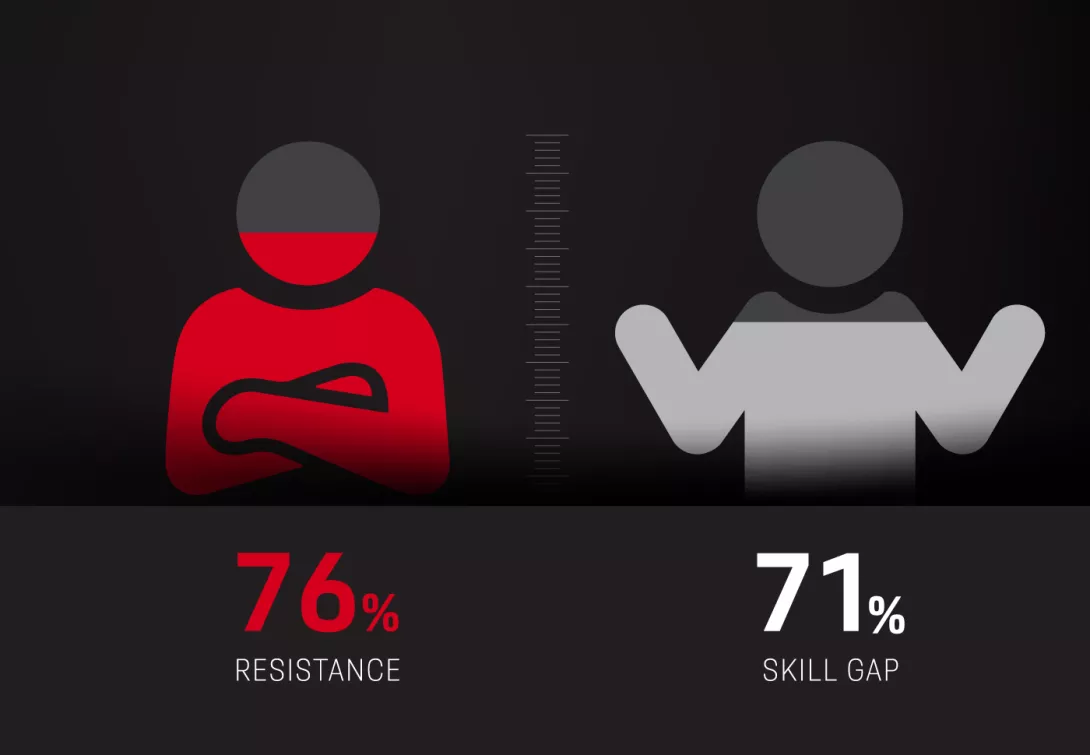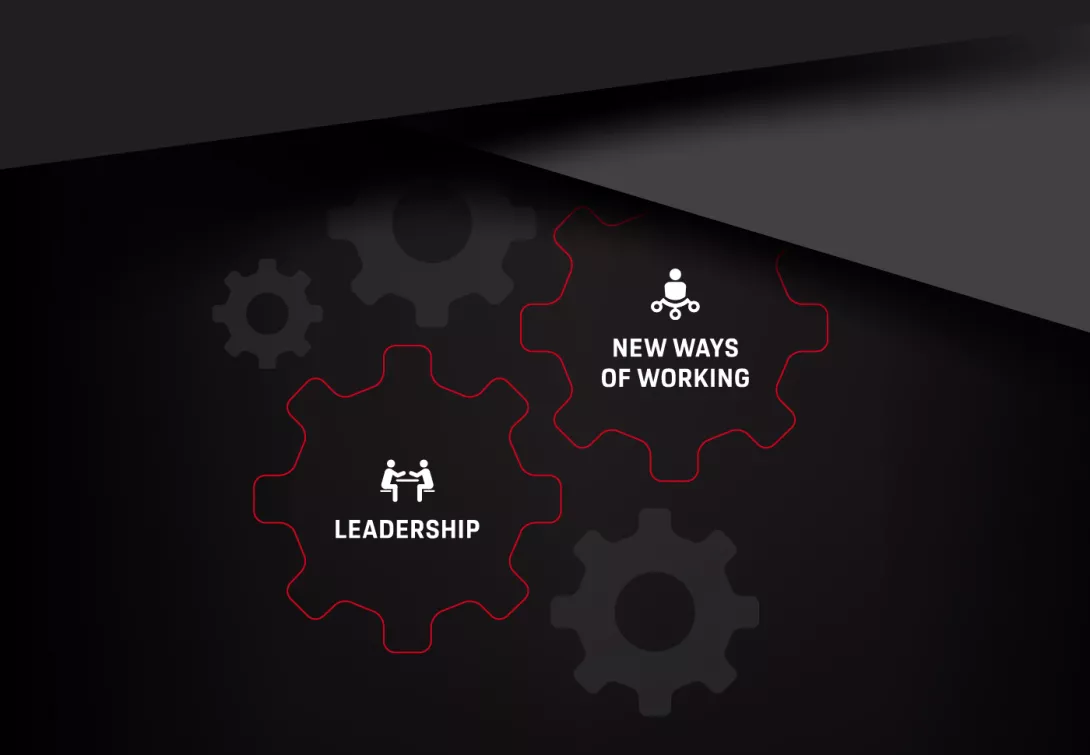Transforming Industrial Goods Companies





Industrial goods represent the backbone of the German economy. Not only do they carry significant weight in overall national exports but they are essential to keeping the manufacturing machinery all over the world well greased. In that sense, the industry is a key enabler in the global economy. However, CEOs at industrial goods companies are currently steering their organizations through the rough waters of global markets that are shaped by immense competitive pressure, volatility, and regulatory requirements. At the same time, products need to meet customer demands and be complemented by services that offer real added value — all the while being available at short notice to quickly react to customer demands. Against this backdrop, many industrial goods companies face a significant decline in order intake. In 2023, manufacturing goods orders declined by 5 percent on monthly average compared to 2022.1 Machinery and plant engineering has been hit even harder, witnessing a 13.2 percent decrease on average.2 Some companies even report a 20 to 30 percent decline and completely vanished order backlogs.
Fundamental transformations are vital for industrial goods companies
Faced with these challenges, a majority of industrial goods CEOs — some 65 percent3 — seek to fundamentally transform their company to ensure sustainable value creation and performance. In the current environment four levers in particular offer opportunities to optimize performance and translate changing market conditions into competitive advantages.
The first lever concerns financial planning and simulation. The strategic outlook needs to shift and be based on economic scenario simulations to achieve foresighted budget allocation. Another central lever can be found in liquidity steering. Order-to-cash and purchase-to-pay processes need to be optimized for early collections and late payments. The third opportunity lies in working capital reduction. Inventory and capital expenditures (CAPEX) have to be reduced across the supply chain while supply chain resilience and delivery times are improved. Lastly, product cost-out: product costs must be optimized through the utilization of commercial and technical levers while maintaining a focus on high quality and customer satisfaction.
Corporate strategies need to re-adjust and integrate all of the above action fields into a sound, synchronized approach to reshape products and processes, tailored to the specific needs of the respective company. No strategy, no implementation plan is worth the paper it is printed on if the people who constitute the company are not willing or not skilled (or neither) to fully support the transformation goal. In other words: activating the people for strategic change makes and breaks transformation success.
Most transformation efforts in the industrial goods sector fail
That being said, the people factor in industrial goods is reason for concern. According to industry-specific data of the Porsche Consulting Management Compass 2023, over three-quarters (76 percent) of employees resist changes coming their way, which is seven percentage points over the cross-industry average (69 percent). And even if they gave up resistance, a significant majority of employees — 71 percent — would not have the required skill set to adequately foster and sustain relevant new behaviors. The survey data paints a somewhat brighter and inverted picture for the middle management: with 53 percent resistance and a 59 percent skill gap, the concern for relevant capabilities poses the slightly greater issue here. Nonetheless, the majority of middle managers oppose necessary changes. Their apprehensive attitude infuses into the way they lead their teams, thereby unfolding a negative multiplying factor at odds with the transformation goals. How can non-managerial employees be expected to actively drive necessary changes in their area of influence if their superiors display hesitation, ambivalence, or plain opposition?

As a result, only 35 percent of transformation initiatives in the industrial goods industry make it over the finish line. This is thus comparable to the average success rate of 30 percent across all industries. However, when looking closely at the specific data, we are able to identify a distinct pattern in successfully transforming industrial goods companies. And leadership plays a key role.
Industrial goods CEOs can learn from best-in-class peers
The industry-specific data suggest that leaders at successfully transforming companies do things quite differently than those who fail. Based on the Porsche Consulting Strategic Change Management framework, senior executives should generally focus on two forces of change when they design their specific approach, leadership being the primary one. Over 90 percent of senior executives of successfully transforming industrial goods companies actively animate people for the goals of the transformation and encourage behavioral change. As the impulses come from the very top, the transformation is backed by the authority and openly displayed determination of the board members. But leadership doesn’t stop at the C-level. Trickling down to direct reports and further on to middle management, managers at all levels must inspire their people to passionately drive the transformation. Only then will they be able to fulfill their role model function as leaders — however, there is room for improvement. In addition, new ways of working should put an end to the confines of a silo mentality, as a more agile and cross-functional spirit makes it necessary to address tasks at hand more quickly and with just the right combination of expertise.

But what does that mean in practice? What exactly could an executive in the industrial goods sector do differently, starting tomorrow? According to industry-specific data from our research around the Porsche Consulting Change Management Compass 2023, the following very practice-oriented success factors from within these two forces of change mark the key anchors that transformation management in the industrial goods sector should be modeled by. Of course, no two cases and companies are alike, and specifics need to be closely considered. However, decision-makers in the industry should do so inspired by these key elements that have carried executives in similar situations over the finish line of their strategic goals. Such an underlying baseline can be summarized as follows:
Provide a sense of direction
Leaders at successfully transforming industrial goods companies provide a clear sense of direction. They build a clear vision, identify a compelling purpose, and share their dream of the future to strive for in order to get their people on board. A prime example is the German family owned company Grob, specialized in milling machines for the automotive industry. Within five years, the organization transformed according to the leadership’s vision to refocus on machinery needed for the production of e-vehicles, rather than combustion engines. Not only did the transformation succeed, Grob was able to significantly boost its revenue in the same time frame. Given such fundamental changes, providing a sense of direction can be understood as the quintessential task of leadership and cannot be passed along to delegates such as non-personal newsletters issued by the communications department. Such a sense of direction must originate from the very top, and consequently permeate into the layers of direct reports, further to the middle management and, eventually, the broader workforce. Before the backdrop of a staggering 76 percent of employees currently resisting change, the importance of this aspect cannot be overstated. Some 83 percent of decision-makers at successfully transforming industrial goods companies practice this approach, compared to only 60 percent at the unsuccessful ones.

Foster controversial dialogue
Off the heels of starting a conversation about the future of the company as leadership shares their vision with the organization, it is important to create platforms for open exchange. Given the particularities of the industry, with volatile market conditions oscillating between overwhelming demand and order lows, dots need to be carefully connected to explain pertaining workforce reductions and the need to run extra shifts. Based on the hierarchical level of the different stakeholder groups, leadership basecamps for managers and town hall meetings for the broader workforce are viable formats to spark discussions and critical feedback. Negative sentiments will not disappear into thin air simply because they are not addressed. To the contrary, they will find ways to surface in the most damaging ways beyond the control of those leading the transformation: for example, in passive resistance to practical implementation efforts such as workarounds in the old process logic. Nobody is served by avoiding controversy. Instead, it should be used by stakeholders to vent their concerns, and for leaders to get a much better idea on how their people “tick” as they further shape their change efforts. Again, given the dire change readiness among employees in industrial goods companies, controversial dialogue is an element not to be missed. More than eight of ten executives at successfully transforming industrial goods companies share this philosophy, compared to just under half (45 percent) of the unsuccessful ones.
Set new social standards
Fostering new social standards significantly increases the likelihood of successful transformations at industrial goods. For example, if a bolder, more risk-taking culture is to be cultivated, leaders should create an atmosphere in which honest mistakes in the search for an optimal solution are not frowned upon.. In general, potentially harmful cultural elements that would stifle progress should be replaced with an atmosphere of encouraging new approaches and innovation instead. It must be possible for the broader workforce and managerial cast alike to unfold new behavior within their roles without the fear of making mistakes, which all too often makes people cling to “the old world,” e.g., established ways of conducting business that the transformation seeks to change. Again, leaders must be at the forefront and serve as role models in these new social standards and counteract concerns through their own example. Naturally, not all attempts will be a hit right away. But they will be outweighed by freer and more creative approaches on the individual and team level, uninhibited by fears of making mistakes. More than twice as many executives from successfully transforming industrial goods companies set new social standards compared to those whose transformations flounder (83 vs. 36 percent).
Enhance cross-functional collaboration
Working across departments and hierarchies is pivotal for transformations to succeed. For example, a close cooperation of production and development can be crucial when raising the automation level in a company. Temporary cross-functional teams can address both impending transformation-related activities as well as long-term business topics in a perfect setup, without inter-silo frictions and inefficiencies and with the perfect combination of experts. Thereby, diverse perspectives strengthen innovation capabilities and decision quality in the critical times of a transformation, and beyond for long-term business success. Among the industrial goods executives surveyed, 65 percent of those who have successfully transformed their company explicitly enhance cross-functional collaboration, compared to just over one-third (36 percent) of the unsuccessful ones.
Summary: Industrial goods — same, but different
Companies that count themselves as part of the industrial goods sector display many challenges that are shared across all industries. But when delving deeper into the data, a specific pattern emerges and takes on a different complexion. Clearly, the industry is in dire need for change. New technologies, new competitors, new business models, and new customer expectations meet a volatile market, global supply chain disruptions, and a variety of ever-changing regulatory requirements. If companies from this sector are to stay afloat — or better yet, rise above the competition — fundamental transformations need to be brought underway, which will need to address the aforementioned four levers in unison. Thanks to the openness of surveyed managers from this sector, we now have a much better idea of the cornerstones of successful transformations in this area. If senior executives at industrial goods companies are to fulfill their mandate to lead their organization to sunnier pastures, intelligent change management needs to put the people at the center of all efforts, with a stark focus on effective leadership and new ways of working.
German Federal Statistical Office, Press releases on orders in manufacturing No, 86, 137, 174, 217, 266, 309, 352, 395, 426, 463 (2023); 26, 47, 86 (2024) (destatis.de)
Based on industry-specific data from the Porsche Consulting Change Management Compass 2023
You want to get in touch with our experts? Reach out to us.